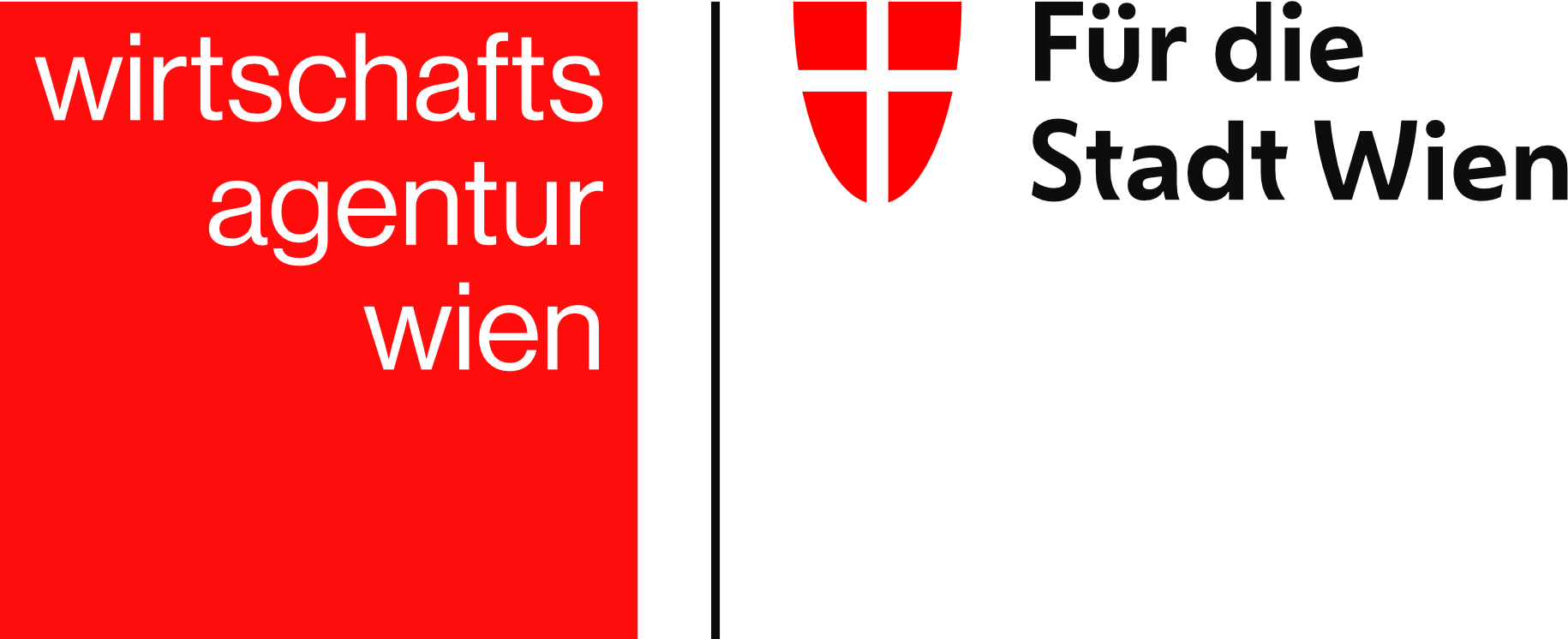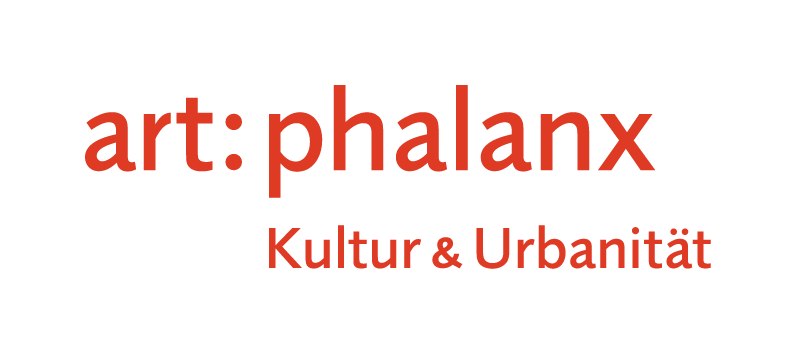
a prize for architectural concepts
now!
Population growth, increasing urbanisation and social change pose new challenges for architecture and urban planning. Reflecting these processes of change, Superscape opens a creative space for unconventional ideas meant to deliver new impulses to real-life architectural output and urban development. The biennial prize seeks to encourage innovative and visionary architectural concepts with an interdisciplinary approach that explore new models of living and strategies for inhabiting an urban context in the future.
In 2024 the Superscape prize is awarded for the sixth time – a joint venture of the non-profit developer WBV-GPA Wohnbauvereinigung für Privatangestellte and the private developer Lenikus Immobilien (in cooperation with Wirtschaftsagentur Vienna).
Form Follows Environment –
Regenerative Architecture
In light of the condition of our planet and of the gigantic demographic changes that will take place in the decades to come, architecture and construction industry are confronted with enormous challenges and issues that have to be addressed urgently and dealt with as fast as possible.
Sustainability will not be sufficient in the future. Growth pressure and simultaneous depletion of resources demand a completely new way of and change in thinking. Regenerative principles have to become an integral part of architecture and urban planning. Form follows environment: Architecture, understood as extension of the location, the terrain, the flora and fauna and the ecosystem, creates concepts that will turn around ecological damages and have a positive impact on the natural surroundings. The goal is to become climate-positive instead of climate-neutral.
In practice, this also means that construction has to be circular construction with sustainable materials and techniques and that the protagonists of the construction as well as of the real estate industry are required to choose innovative paths: Renovation instead of demolition; maintenance, transformation and flexible use of already existing buildings; material recycling, upcycling of building structures, retrofitting and urban mining – all of this and much more will contribute to optimising the use of stock and resources. The re-use-principle also helps revaluating and preserving technical skills and creates local jobs.
In this context, there are many central questions that have to be dealt with:
What does regenerative/resilient architecture look like in practice?
How can we use nature as medium and generator of architecture, how can we include living systems as components and imitate the restorative aspects of nature?
How can we design structures that will not continue to use our limited resources but will restore them instead?
What do fundamental changes of our construction industry look like and how can we provide a constructive input on the implementation of the holistic principles of a circular creation of value?
How can we deal with natural resources in a careful and responsible way and at the same time create affordable and financeable living space for a continually growing urban population in a socially sustainable way?
How can we create resilient surroundings that can face the challenges caused by climate change?
In this context, the thinking and planning approach of biophilic urbanism have to be explored and substantiated: How can we integrate nature (light, water, plants, weather, natural landscape, the ecosystem) systematically into the urban texture in order to create restorative places and spaces?
How can biomimicry and nature based solutions be integrated into planning considerations and how can they be implemented according to the EU Green Deals and the New European Bauhaus?
Which and in what way can biomaterial be used for the development of regenerative urban ecosystems? How can biomaterials that are obtained for example from fast growing plants or residues and waste materials from the cycles of urban living spaces become the basis for urban bio-loops and regenerative building constructions?
What are concepts for dealing with the surroundings/the urban structure?
To what extent do aspects like choice of location (in-fill development, densification), already existing buildings (revitalizing, renovation, restoration), soil (on-site-processing e.g. excavation soil), interdependencies on location (energy communities, closing material cycles, multiple use), land consumption (optimising foundation and basement design, minimising urban sprawl), building size and structural shape (multiple use, compact construction, optimised surface-to-volume-ratio) have to be considered in this context?
Considering the urgence of the upcoming challenges, the Superscape Prize is more than ever a "call for action” that shall contribute to push innovative thinking towards urgent action. The current Superscape topic shall not only further the mind shift from sustainable to regenerative architecture as strategy for coping with the climate and biodiversity crisis and for establishing it as basis of a new architectural canon, but it is also the intention to make a practice-oriented contribution for an innovative building industry of the future for a social and sustainable society.
in a two-stage competition
The first stage is an anonymous, open process.
At the time of the submission deadline (March 15, 2024) all submissions will be checked on the basis of the formal criteria and will then be forwarded to the jury.
The jury, consisting of Anna-Vera Deinhammer, Angelika Fitz and Thomas Romm, will nominate six concepts for the shortlist and the chosen submitters will be invited to elaborate on their concepts. During a second jury meeting the winner of Superscape 2024 will be chosen and announced in a public award ceremony in autumn 2024.
Prizes
€ 10.000,- for the winning project
€ 2.000,- for each shortlist project
Eligible candidates must have at least a degree (e.g. Bachelor degree, Dipl. Ing.) in architecture, landscape architecture, urban planning or design from a university or academy. Multi-disciplinary teams are eligible, provided they have at least one member which fulfils these criteria.
During the first application period, the participants are asked to submit short, concise concept sketches containing visionary ideas on the focus theme of Superscape 2024. The first meeting of the expert jury will take place immediately after the end of the application period, and the nominations for the shortlist will then be announced.
Application materials are to be submitted by March 15, 2024, 4 pm (CET) digitally and completely as PDF or collated into one file and using a file hosting service (e.g. WeTransfer) with the reference "Submission Superscape 2024".
Submissions via a file hosting service/e-mail must be sent to the following e-mail address:
submission@superscape.at
The teams and participants on the shortlist will be invited to elaborate on their concepts until August 30, 2024 and to submit them by that date to the organisers of Superscape 2024. During a second jury meeting, the winner of Superscape 2024 will be chosen; the winner will be announced in September/October 2024.
Detailed informations on participation conditions, award process and further relevant topics can be found here:
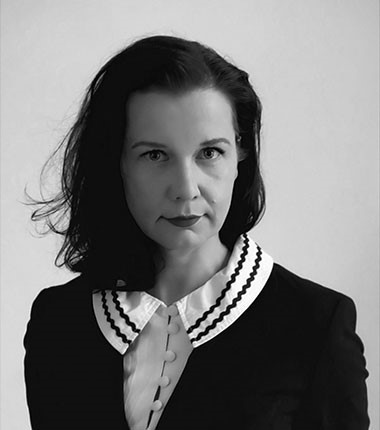
Dipl.-Ing. Dr. techn. Anna-Vera Deinhammer is a Vienna based Strategist, Lobbyist, and Integral Engineering Scientist. She holds a diploma in architecture and a doctorate in integral engineering in Vienna and Sydney in the field of holistic quality assessment of buildings. Her work focuses on circular economy in construction, integral construction research and engineering science; since 2022 she is Director for Circular Cities & Regions in the Circular Economy Forum Austria. She also represents the Austrian Sustainable Building Council ÖGNI at the World Green Building Council and the Climate Positive Europe Alliance CPEA in Brussels and is involved in standards development in the "sustainability of buildings" committee of the Austrian Standards Institute ASI. Since 2023, she is member of the Global Advisory Council under the auspices ALL Ladies League, regarding SDG Goal 11 Sustainable Cities and Communities for the G100, Group of 100 Global Women Leaders and holds the Endowed Chair for Sustainable Real Estate Development at the University of Applied Scienes for Management and Communication FHWien der WKW.
Fotocredit: © Wirth
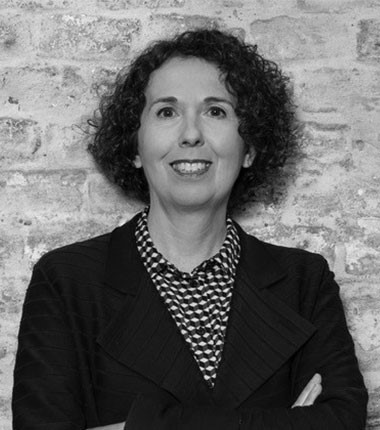
Angelika Fitz has been Director of the Architekturzentrum Vienna (Az W) since 2017. Prior to this, she had already been working internationally as a curator and author in the field of architecture and urbanism. She focuses on the societal contextualization of architecture, the use of resources, planetary and feminist perspectives. In 2022 she was awarded the Julius Posener Prize für architectural theory. Her most recent exhibitions and publications at the Az W include "Hot Question–Cold Storage" (2022) with Monika Platzer, "Critical Care. Architecture for a Broken Planet with Elke Krasny", the book has been published by MIT Press, as is her book "Yasmeen Lari. Architecture for the Future", co-edited with E. Krasny and M. Mazhar, 2023.
Fotocredit: © Katharina Gossow
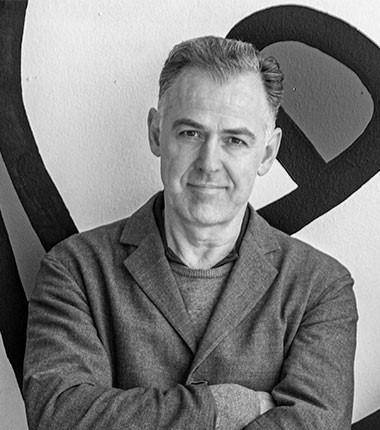
Arch. Dipl.-Ing. Thomas Matthias Romm studied architecture at TU Vienna and TU Berlin. He is a civil engineer and independent architect with a focus on the environmental effectiveness of planning and building. As an expert for recycling economy he is currently working on climate-generative design and development of urban districts and building sites mainly in residential construction. The focus is on value creation concepts that connect ecological and economical goals and that convey future-oriented alternatives for building. He is dedicated to ambitious research projects and is a founding member of the cooperative BauKarussel e. Gen. – Gesellschaft zur Vernetzung der zirkulären Bauwirtschaft – a cooperation network of socioeconomic companies for the dismantling of construction components for reuse, an employment and qualification project with an environmental background. Thomas Romm teaches Ecology for Architects at IKA, Institute for Art and Architecture at the Academy of Fine Arts Vienna.
Fotocredit: © Kurt Patzak
THEME 2022:
GREEN SHIFT - Visions for sustainable living
The urgency of the climate crisis, which is being felt globally, is the starting point for a broad process of rethinking that has also taken hold in the construction industry. The long-term protection of the environment and climate, not least as a qualitative habitat for humans and animals, is one of the most urgent goals of modern architecture.
In the context of digital networking, social sustainability, smart cities and climate care, it is important to explore innovative potentials and problem solutions of architecture as well as to dare visionary views of the future and design experiments that address future challenges of urban space in the year 2050.
WINNING PROJECT SUPERSCAPE 2022:
The Grafted City by Alberto Roncelli
The project presents a critical reading of the anonymous spaces – the remains or leftovers – of today’s city and investigates a model of urban densification that is conceived to support the sustainable lifestyle of tomorrow. The Grafted City doesn’t describe a new city but, rather, examines the potential of an existing one. Above all, the landscape of the Grafted City emerges from the recovery of inadequately used spaces and the encouragement of the creation of a network of architectural experiments based on lightweight construction methods as a means of triggering, testing and iterating new models for sustainability. The city of the future, and its businesses, cannot afford to leave any spaces unused.
The project is in two parts:
1. Mapping – A case study was set up in order to illustrate the potential of the Grafted City and to indicate these leftover spaces. The analysed area is Nordvest, a district in the North of Copenhagen. It was possible to identify over 200 unused spaces, nine of which could be defined as potentially useful for the Grafted City project.
2. Exploring – In addition to the selection of these leftovers, 16 projects were investigated. The use of these spaces in line with the principles of sustainable urban development over the course of the coming decades can be broken down into four aspects: space for non-human beings, for food production, for cultural activities and local communities and for the sustainable use and reuse of materials
THEME SUPERSCAPE 2020
MIXED-USE CITY - Living, Working and Urban Production
Like the earlier industrial revolution, it is now the digital revolution that is influencing social, economic and socio-cultural processes and, hence, making increased demands on the functionality and use of urban habitats. The barriers between public and private space, between living and working, between digital and analogue are steadily disappearing. The relentless merging of many of the aspects of the lives of the inhabitants and users of cities and the shifting of these to the digital level mean that the built environment can no longer be structured in a mono-functional way.
As we search for forward-looking, sustainable and people-oriented approaches to urban development the idea of “mixed use” has huge potential. In this context, urban production and its increasing importance as a significant element of the diversified city plays a prominent role.
The ever more intensive relationships between and mutual interconnectedness of knowledge, research, development, culture and services and the new manufacturing methods brought by digitalisation are also re-establishing the place and role of production in the city. The task for architecture is to test creative concepts, innovative models and solutions that propose visions of the future and experimental designs and address the spatial and social challenges of urban (living) space in the year 2050.
WINNING PROJECT SUPERSCAPE 2020:
The urban wasteland, Eva Herunter (AT)
The project takes up the discussion about production, conservation, transformation and decay in urban landscapes. The substance for the city of the future is found in those places where human interventions overlap with the momentum of non-human metabolic processes. The project questions the use of urban wastelands in the post-industrial city and appeals for these spaces – these vast, continuous areas that were previously exploited by the consumer economy – to be safeguarded for the city and, for the time being, left to their own devices.
The ‘urban wasteland’ is designated as the urban element of the future. For these wild, in-between spaces contain not only huge reserves of energy for ecological reproduction, but also social potential as the final free spaces in an ever denser and ever more rapidly regulated city.
It is precisely this absence of a clearly defined function that makes this urban wasteland so productive, open to appropriation and free for unforeseeable and unplannable uses. Hence, a strategy of non-planning, non-programming and non-organising should prevail in such places. Because it is this that makes space for the suppressed and often forgotten participants in the urban ecosystem: animals, bacteria and plants. If these abandoned areas are simply left to their own momentum, a new, active urban landscape will emerge. This could complete Vienna’s green belt and then widen it further by adding new, dynamic and diverse green spaces.
THEME SUPERSCAPE 2018
Urban Renewal - Departures, Renewal and Stability in the Digital Age
Ever increasing in size, the city has created building typologies and structures in the 20th century which have left their imprint upon urban space and its dynamic to this day. Increasing urbanisation and digitisation drive social change processes with ever-increasing speed. Architectural construction measures can hardly be adapted to this speed while still conserving resources. Between analogue and digital worlds, sharing and prosuming, data security and targeting via data harvesting, ways of life, consumer and communication habits are also changing. This is associated with higher demands for urban living spaces that are geared toward the future, as an increasing amount of existing building structures and substance becomes redundant.
At the same time, the city population keeps growing, more living space is required and the associated needs of its inhabitants are also influenced by digital change. In the context of social and technical networking, ecological sustainability, smart cities and smart homes, the goal is to explore innovative potentials and problem solutions that architecture can offer, and to dare to imagine visionary future scenarios and design experiments in response to spatial and social challenges in the urban space in 2050. Multiple questions arise in this context:
How will current urban substance fare in the future? Which possibilities of second or intermediary usage can be developed in order to revive existing buildings and avoid vacancies?
Which building typologies will be affected, and how can these spaces be designed and used in innovative manners (e.g. a large shopping mall within an urban catchment area, office buildings from the 1970s within the expanded city centre now surrounded entirely by residential areas, or large retail locations within rising quarters on the fringes of city centres, etc)?
What is the role of economic dynamics and innovative technologies?
Which solutions may turn out to be both ecologically, socially and functionally sustainable?
Which options and potentials result from the context of social and technical networks for architecture, urban planning, living spaces and inhabitants?
What is the role of the interaction between architecture and digitisation? What forms might this take and how will digitisation affect space and human cohabitation within it?
How must this interaction be oriented in order to create an added value for inhabitants?
WINNING PROJECT SUPERSCAPE 2018:
The Permanently Temporary: in the age of gravity- independent architecture,
Viktória Sándor, Wien (AT)
The project investigates the future of urban environments using Vienna (Austria) as a case study. It proposes a new ephemeral infrastructure, which by providing climatically controlled temporary spaces for the city, increases its dynamism, adaptivity, and capacity. By the introduction of such ephemeral spatial system, the project aims to visualize potential solutions for emerging issues due to 1) climate change; 2) population growth in urban environments; 3) and the “urban-scissors-effect” (=increasing contrast between the rigidity of the built environment and the rising importance of the notion of temporality in everyday life).
THEME SUPERSCAPE 2016
Future Urban Living – Functional Reduction with Maximum Space Gain
The Superscape 2016 title Future Urban Living – Functional Reduction with Maximum Space Gain opens a field for visionary design suggestions and space concepts which focus on building the urban residential space of the future. Innovative solutions are sought, combining high-quality residences with great space efficiency and the greatest functional flexibility possible. In this context, the changing needs and requirements of urban dwellers for their residences during the next 50 years shall be taken into consideration. The goal is to formulate forward-thinking concepts, to question familiar residential patterns and to risk experiments in design, but also to consider their feasibility, and to check the possibility of realising them within existing building substance and existing urban structures. Furthermore, the subject is highly relevant with regard to increasing mobility and urban traffic flow within the context of urban planning. Immediate feasibility and current limitations imposed by building codes or norms should not be of primary concern.
WINNING PROJECT SUPERSCAPE 2016:
Counternatures. the genealogies of augmented domesticity
Pedro Pitarch, Madrid (ES)
The project Counternatures examines the question of how tension and interaction between public and private spaces, which have formed our surroundings for centuries, are currently developing. In today’s city, increasingly also shaped by digital worlds, the borders of urbanity and domesticity are blurring. Various spheres of space usage stand next to each other contrapuntally, forming so-called counternatures. This changes the functional attributions of architecture, allowing new residential typologies to arise. Architecture is no longer consumed, instead becoming a place where such counternatures are incessantly produced, constantly constructed as part of daily life after the digital revolution. Buildings must do justice to these different requirements, as houses suddenly become home to parts of the public sphere: the broadcasting of a concert turns the living room into an auditorium, the bedroom becomes a stadium through live transmission of the football finals or online games. The hallway is transformed into a catwalk from where fashion tips are shared with followers and the kitchen into a market where a pop-up store might set up temporarily, the dining room becomes a conference hall, the cabinet a museum of private artefacts and an artist’s studio. Both domestic and urban spaces thus house new areas in which the possibilities of social relations are used in previously unknown ways.
THEME SUPERSCAPE 2014
Cities as Power Plants
Without public space, the private sphere lacks context; both areas are marked by constant reciprocity and mutual interdependence. Accelerated by the way in which both spheres are becoming superimposed by digital realities, this structural fabric is currently shifting massively. Forming the physical framework of this fabric, architecture and urban planning are equally confronted with new needs, potentials and challenges. Therefore, Superscape 2014 focuses on the interface between public urban space and private living space, inviting protagonists of architecture and space planning to submit their ideas and visions of future concepts. Which spatial practices will result from concepts already tested, such as home offices, guerrilla gardening, functional hybrids in the ground-floor zone, communicating façades, individually adaptable buildings or functionally open architecture? Which new forms of space usage between the private and public sphere are needed? Which frameworks can architecture and urban planning provide to reach these goals? How might this change the understanding of the private sphere and public space?
Given the pluralistic society and changing individual life situations, architecture that is elastic in form as well as in content is necessary. The use of architecture is not only a phenomenon of space, but also of time, being invariably embedded within a social and personal context. Buildings which are never finished, but grow and can be expanded according to their use, life spaces that can be adapted and designed according to private needs, as well as modular spatial solutions – all these open up new perspectives on architecture and potentially respond to the complexity of modern society.
WINNING PROJECT SUPERSCAPE 2014:
Pocket Mannerhatten Ottakring
Florian Niedworok (AT)
Based on the architectural urban structure of Vienna, the project “Pocket Mannerhatten Ottakring” examines the question how sensible synergies between individuals and large-scale investors can be found as part of the process of urban densification. It confronts the challenge of fragmented building lots and offers concepts for re-condensing and using these in an orderly, cooperative form, taking advantage of the significant effects on the quality of life of the persons involved in the project, but also acting as a model far beyond the local level. The project description makes reference to the legal framework conditions and describes structures that can be created in order to implement the projected agreements between the individual protagonists.
Project management and coordination:
Brigitte Auer
art:phalanx Agentur für
Kultur und Urbanität
Neubaugasse 25/1/11 |
1070 Vienna, Austria
t | +43 1 524 98 03 16
e | mail@superscape.at



